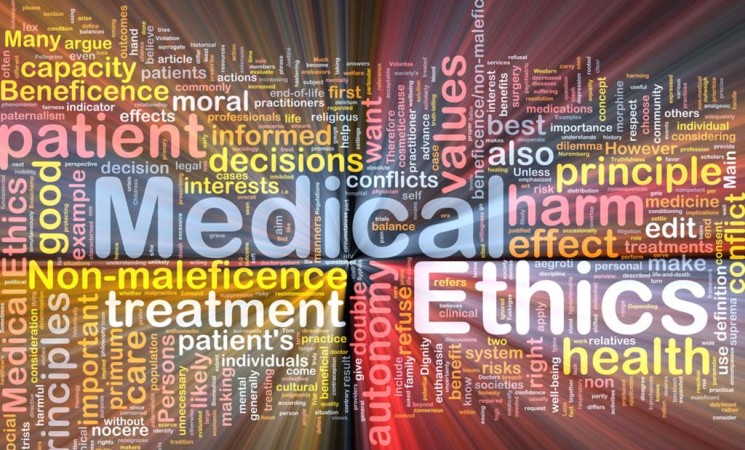Archived Content
This page is archived and provided for historical reference. The content is no longer being updated, and some of the information may have changed over time and could be outdated or inaccurate.

By Sue Estroff, Ph.D.
The Office of Behavior and Social Sciences Research (OBSSR) will present some of its work from over the past decade on relationships between humanities, ethics, and behavioral and social sciences at the April 22, 2016, workshop, Integrating Behavioral and Social Sciences (BSS) into Health Education, which will be held at the NIH.
This work is part of NIH-funded research to strengthen behavioral and social science education in medical schools. The upcoming workshop aims to share methods and mechanisms for integrating social and behavioral science curricula into health professional education.
As part of the medical ethics and the health care system module of our course at The University of North Carolina School of Medicine (UNCSOM), we consider coercion and involuntary treatment and the role each plays within the health care system. In this session, each seminar group selects topics they wish to examine regarding coercion and involuntary treatment. We provide foundation documents to get the students started. During the seminar, the students divide into topic-based groups and prepare to present and discuss their findings and analysis to the other groups.
Coercion and Involuntary Treatment
Use of involuntary treatment, confinement, and containment in various forms is common practice when treating patients who are deemed dangerous or even simply social liabilities. Such methods are most often employed on patients with disabilities, particularly those diagnosed with psychiatric and substance use disorders. In addition, patients with serious infectious diseases, those who engage in violent or predatory activities, and those who expose themselves or others—especially children—to health risks, are likely to experience some form of involuntary treatment, confinement, or containment.
Given that medical decision-making in the face of danger is wrought with urgency, it can sometimes be difficult to take time to reflect on actions as carefully and critically as we would like. In this session at UNCSOM, we examine the moral and clinical dimensions of “therapeutic coercion.”
King (SMR Vol 1., p. 162) defines coercion as: “Control of one person’s behavior by another. It is always incompatible with autonomy and is therefore morally unacceptable, unless it can be justified by a principle or interest that is sufficiently compelling to outweigh autonomy under the circumstances… coercion [refers to] influences that intended to control behavior by means of a severe and irresistible threat. Coerced actions are intentional actions, but actions about which the actor ‘has no choice.’”
For our purposes, this term includes: involuntary confinement—physical and legal — for treatment and for prevention of contagion or harm; coerced, “leveraged,” “assisted” (current terms of reference in clinical discourse), and directly observed treatments including surgery and medication; involuntary treatment and commitment laws (inpatient and outpatient); and similar socially-sanctioned, choice-eliminating practices that are operant for many people with endangering behaviors, diseases, and disabilities, as well as for pregnant women.
Among the questions raised are whether coerced treatment can be fully therapeutic; whether deprivations of liberty and choice based on clinical criteria are monitored and regulated adequately, and by what mechanisms; and how the hidden terms of coercion and confinement extant among people with fear- and risk-inducing conditions may undermine their efforts to lead lives of meaning. Importantly, what role should physicians play in overriding patient autonomy, invoking the police power of the state, to prevent or lessen harm to the patient or others?
These issues are particularly relevant in the wake of recent incidents of gun violence and significant loss of life at schools and other public places. Some of these events involved the use of weapons by people with psychiatric disorders. National attention has focused on denying access to weapons to people with psychiatric disorders and to improving access to effective psychiatric treatment, either voluntarily or under court order. Both require an ability to accurately diagnose, as well as assess or predict, the risk for violence a person poses. Risk prediction and diagnostic accuracy are challenging, and research demonstrates that there is considerable room for improvement.
Laws vary from state to state regarding the rationale, criteria, and procedures for treatment in the face of explicit refusal or without the consent of the patient. Most states require some sort of judicial mechanism to ensure that the patient’s choices, rights, and autonomy are protected to some extent. A person may be considered incompetent and lacking decisional capacity to make informed choices about treatment from the clinician’s point of view, but beyond an emergency and temporary period, a magistrate or other officer of the court must validate that finding.
Overviews of Coercion in Medicine
- Gray, Benjamin. Psychiatry and Oppression: A Personal Account of Compulsory Admission and Medical Treatment. Schizophrenia Bulletin vol. 35 no. 4 pp. 661–663, 2009.
- Napier, S. When Should We Not Respect A Patient’s Wish? Fall 2014. Journal of Clinical Ethics. 25(3):196–206.
- Schneider, Carl. Benumbed. Jan-Feb 2004. Hastings Center Report. 9–10.
Selected topics of coercion in treatment
Each seminar chooses which of the topics listed below to consider, and the students form topic-based groups to present the issues to the rest of the class.
- Directly observed or mandated treatment for infectious diseases and vaccinations (TB, HIV/AIDS, Ebola, etc.)
- Involuntary inpatient or outpatient treatment for psychiatric disorders, including substance use, eating disorders, and psychosis.
- Pregnant women’s decision-making during pregnancy, delivery, and the post-natal period.
- Placement of catheters, IV lines, and other invasive equipment refused by or without the consent of the patient (particularly in nursing homes and other institutional settings).
- Intrusions of bodily integrity: Surgical procedures and procurement of DNA, blood, or tissue samples without the consent of the patient.
Discussion Questions
- What are the ethical questions raised by coerced treatment? Identify and discuss how to address each (e.g., respect for persons, informed consent, decisional capacity, beneficence on steroids).
- Does it matter if forced treatment is therapeutic for the patient if the wellbeing of others is protected? What does the evidence suggest about the efficacy of forced treatment?
- What types of persuasion, manipulation, and coercion are apparent and implemented in this area? What could or should have happened differently?
- Do the statutes and procedures protect autonomy and/or enable beneficence for patients in these situations? Who can or should have the power to coerce in these cases?
- What, if anything, can you say about physicians’ attitudes regarding the implementation of the treatment and circumstance described?
- What clinical and procedural practices might be developed to ease the impact of coercion on unwilling people?
About the Author
 Sue Estroff, Ph.D.
Sue Estroff, Ph.D.
Sue E. Estroff, Ph.D., is professor in the Department of Social Medicine, School of Medicine, and a research professor in the departments of anthropology and psychiatry at The University of North Carolina at Chapel Hill (UNC). She earned her Ph.D. in anthropology from the University of Wisconsin–Madison, and completed 3 years of postdoctoral training in psychiatry as an National Research Service Award fellow. Research areas include: cultural approaches to psychosis; sociocultural factors that influence the course of psychiatric disorders; reconsidering the association of violence with persons with psychiatric disorders; contested subjectivities in psychiatry and disability medicine; and early intervention in schizophrenia. She is the director for the professional development components of the new UNCSOM curriculum, and is co-director for the year-long introductory BSS, humanities, and health policy Foundation Phase course. Estroff received a UNC post-baccalaureate teaching award in 2014. She contributed to the Association of American Medical Colleges MCAT revision for social science content and pilot testing of the revised MCAT at UNC, and she is currently a member of the Behavioral Science National Board of Medical Examiners question writing committee. Read more: https://www.med.unc.edu/socialmed/people/sue-estroff
Photo Credit: Shutterstock/ Kheng Guan Toh








